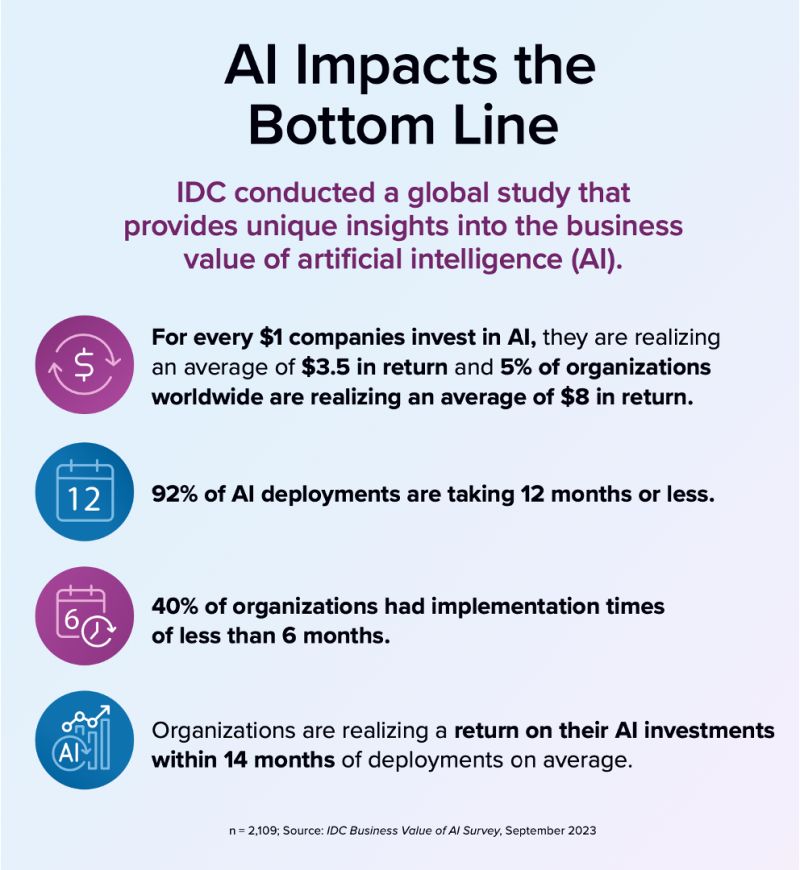The ROI of AI: Here are IDC numbers that show the impact that AI is having on the bottom line. Let me also add some perspective that we are seeing with our customers at Spearhead.
1. Investment Returns: Companies investing in AI are getting real ROI. On average, for every dollar spent on AI, there’s a $3.5 return. And a noteworthy 5% of organizations are even seeing returns increase to $8.
Comments: We are seeing productivity gains that translate into real ROI. When our customers implement something (relatively) simpler like a Co-Pilot, their resource productivity improves by 10% to 35%. However, the productivity and ROI are much higher with custom AI that is developed for their specific use case and private data.
2. Deployment Speed: The pace of AI integration is accelerating, with 92% of AI deployments being completed in a year or less. This rapid adoption suggests a growing confidence in AI solutions across industries.
Comments: This seems on point, as most of MVP deployment timelines for simple use cases range from 3 months to 6 months.
3. Fast Track Implementations: Not only is AI deployment swift, but 40% of organizations reported implementation times of less than six months. This reflects an impressive agility in operationalizing AI technologies.
Comments: Agreed with a caveat that figuring out where to apply Gen AI takes time for business discovery and use case identification. The implementation is faster from that point forward.
4. Rapid ROI Realization: The commitment to AI is paying off quicker than one might expect. Organizations are seeing returns on their AI investments within an average of just 14 months post-deployment.
Comments: There is a wider range on this one. In some use cases like customer service, the return is much faster since the agent productivity kicks in early in the process.
Overall: we agree with the assessment that based on early observations, we can project that AI is creating ROI and tangible results. However, we are still early in terms of quantifying the real impact.
When organizations adopt AI by effectively integrate AI into their workflow and operations, that is when the real measurement of value will take place.
It is possible that we not only achieve the productivity projections but there would be an upside due to continuous improvement of AI models and cost decrease of AI technology.
What are your thoughts on the ROI of AI?
#ArtificialIntelligence #ROI #IDCReport #TechTrends #FutureOfWork #AIInvestments #aiproductivity

